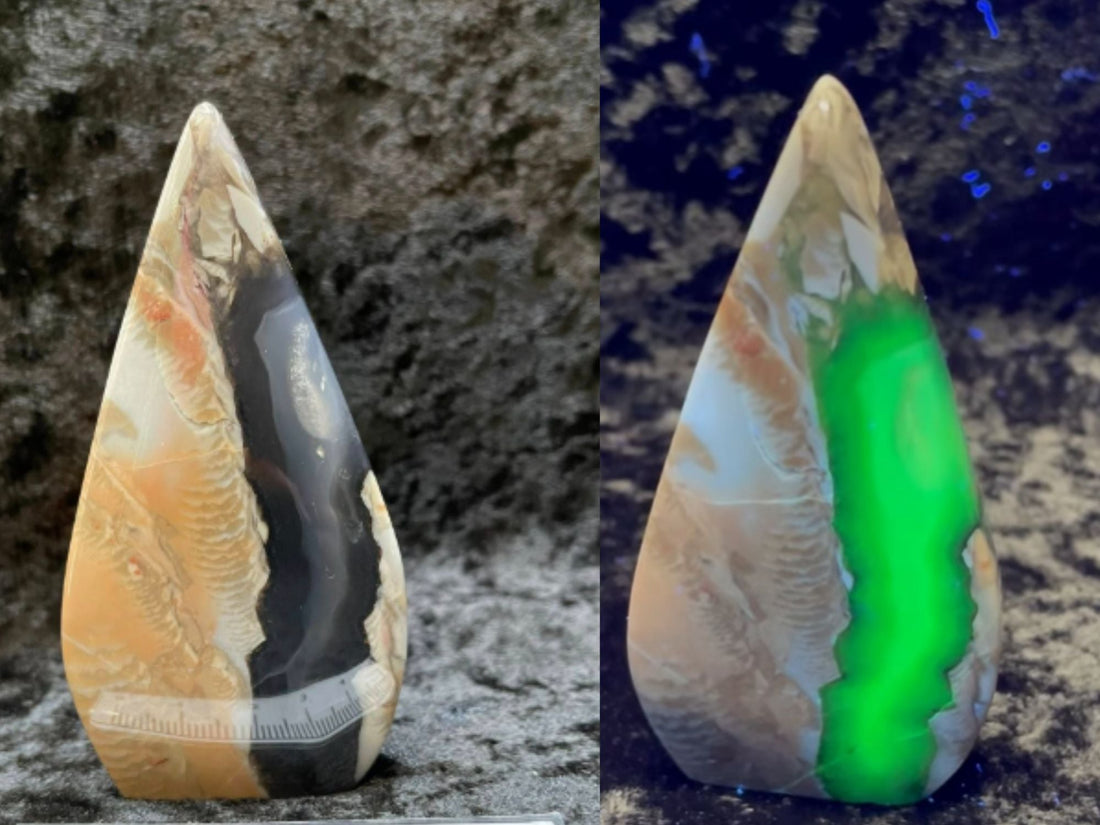
Volcanic Agate Flames: Nature’s Fiery Masterpiece
Share
Nature has an extraordinary way of sculpting beauty, and Volcanic Agate Flames are a striking example of that. These mesmerising formations are a variety of chalcedony—a microcrystalline form of quartz—renowned for their intricate banding, vivid colours, and unique fluorescence. Their fiery hues, reminiscent of molten lava, make them sought-after specimens, while their ability to glow green under UV light adds to their mystique.
Formed within volcanic cavities, these agates are shaped by geological forces that deposit silica-rich solutions over time, eventually crystallising into breathtaking patterns. Some appreciate them purely for their geological significance, while others believe they hold metaphysical properties that promote grounding, balance, and transformation.
Scientific Process of Formation
The formation of Volcanic Agate Flames is a complex geological process that unfolds over thousands to millions of years. It begins with volcanic activity, where molten rock (magma) rises from the Earth's mantle and erupts onto the surface. As the lava cools, gases trapped within the magma create cavities or vesicles in the volcanic rock. These voids provide the perfect environment for mineral deposition.
Over time, silica-rich solutions—often carried by hydrothermal fluids or groundwater—percolate through the porous volcanic rock. As these solutions seep into the cavities, they deposit thin layers of silica (chalcedony) along the walls. This gradual accumulation forms the characteristic banding seen in agates.
The presence of trace elements, such as iron oxide and uranium, influences the colouration and fluorescence of the agate. Iron oxide contributes to the fiery reds and oranges, while uranium causes the green glow under UV light. The final stage of formation occurs as the silica layers harden, crystallising into the stunning patterns that make Volcanic Agate Flames so distinctive.
Distinctive Properties
- Fluorescence – Their eerie green glow under UV light is caused by uranium traces in the silica structure, making them a remarkable specimen for collectors and researchers.
- Unique Patterns – No two Volcanic Agate Flames are identical. Some exhibit bold, molten-like waves, while others display delicate, swirling formations that seem frozen in time.
- Metaphysical Associations – While scientifically fascinating, some believe these agates hold energetic properties linked to stability, personal transformation, and emotional balance.
Locations
Volcanic Agate Flames are primarily found in regions with past volcanic activity, where silica-rich solutions have had the opportunity to crystallise within rock cavities. Notable locations include parts of Mexico and the southwestern United States, particularly Arizona and California, where historical volcanic processes created ideal conditions for their formation.
Volcanic Agate Flames are more than just striking geological specimens, their colours and UV fluorescence reflect the geological processes that formed them, preserving a record of Earth's dynamic history.
Join Our Wholesale Facebook Group Here To Shop Volcanic Agate Flames
Create Your Wholesale Account Here
References: